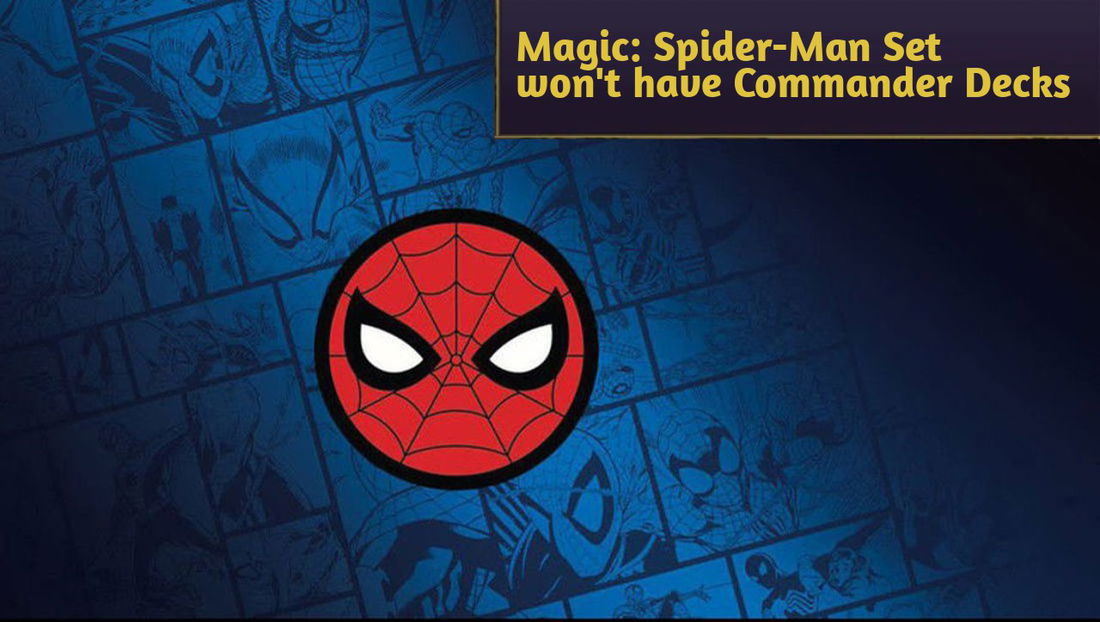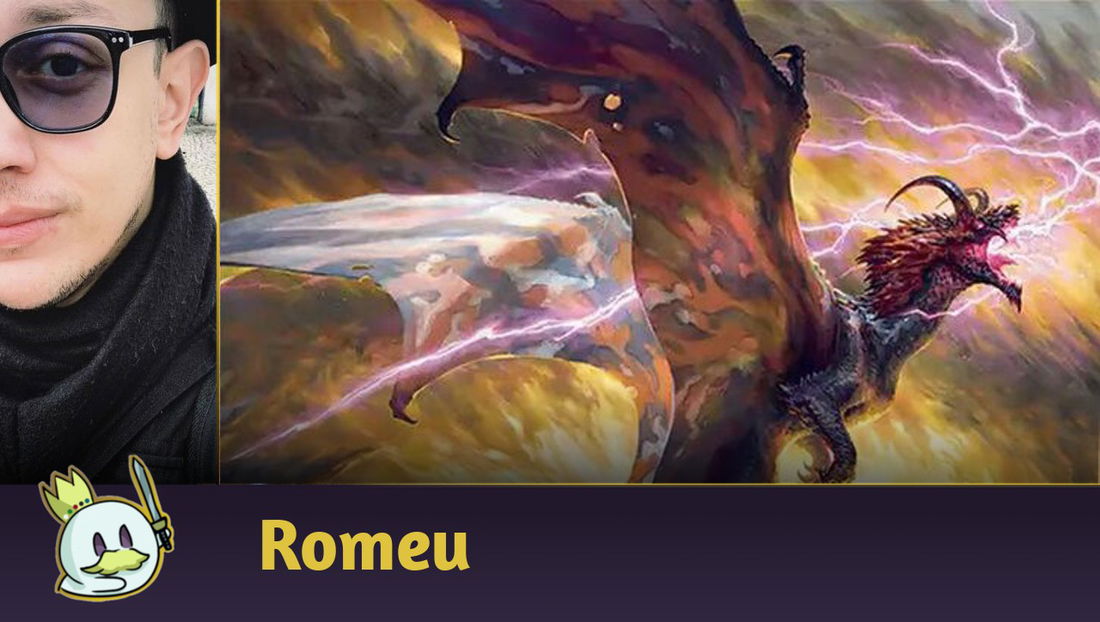The Premodern format offers a unique opportunity to revisit the classic era of Magic: The Gathering, spanning cards released between 1995 and 2003—before the frame change in Eighth Edition. Since last year, this format has gained more and more fans with each new major event, establishing another community-created format as extremely appealing to new and returning players.
In this guide, we’ll explore the main staples of Premodern, cards that are essential and have a high presence in tournament and competitive play for any player looking to jump into the format and build their own collection.
Premodern's Main Staples
Lands

Just like in every format where they are legal, Fetch Lands are staples in Premodern, but without the same glamour that they have in Legacy or Modern as the format doesn't have duals or Shock Lands, or any other land with a typing that is found by them, not to mention that Brainstorm is banned in Premodern, reducing the shuffle potential.
The best way to see Fetch Lands in Premodern is as duals that enter untapped and that can interact with Threshold or spells that exile cards from the graveyard, which already guarantees that they deserve slots in several decks in the format.

Ad
Pain Lands are the second cycle of untapped duals from Premodern and with a wider color diversity than Fetch Lands, fortunately for a much cheaper price too, making them an excellent initial investment for your collection.

Multicolored lands don't show up in all lists and do not even appear in all three-color decks of the format, usually present in combo lists that need to access several cards of different colors and with speed that makes their drawbacks negligible.

Mana disruption is essential in Premodern. One of the factors that limits multicolored decks is the constant presence of Wasteland in several lists, making it the most played land in the format and an essential staple.
Rishadan Port is not far behind in effectiveness and forces many players to respect it, appearing more frequently in monocolored and aggressive lists that can take advantage of the tempo play that taking an opponent's land every turn offers.Dust Bowl appears in fewer lists, as it requires a more specific setup to work.
Ad
Other utility lands occasionally show up in the format, especially manlands like Mishra’s Factory and Faerie Conclave in Standstill decks or Treetop Village in some green midrange lists like The Rock, or Barbarian Ring in Burn.

Running the original Sol Lands may seem tempting, but they usually show up in specific archetypes. Furthermore, City of Traitors is part of the Reserved List and its monetary cost is better invested initially in Fetch Lands and other staples.

White

 will use a set of Swords to Plowshares.
will use a set of Swords to Plowshares.Ad

Artifacts and Enchantments are very common in Premodern, so cards like Disenchant or Seal of Cleansing are essential for both the sideboard and the maindeck in some archetypes.

 , but Eternal Dragon and Decree of Justice tend to show up with some frequency as complementary threats and/or win conditions in slower decks.
, but Eternal Dragon and Decree of Justice tend to show up with some frequency as complementary threats and/or win conditions in slower decks.
On the aggressive spectrum, Mother of Runes and Silver Knight are staples in almost every aggressive list with 

Ad

Lists with Standstill and even some variants of The Solution run Humility to establish board parity. As part of the Reserved List, this is a card that is only worth investing in if your deck interacts positively with turning creatures into 1/1s.



Ad
Among the Sideboard staples, we have Circle of Protection: Red and Warmth against Sligh and Goblins, Aura of Silence against enchantment decks, in addition to Sacred Ground to deal with Ponza and Orim’s Chant, which can stall a crucial turn for the opponent.
Blue

 just to cover the cost of the card.
just to cover the cost of the card.On the other hand, some three-color lists or those that already overextend themselves to another color can't always afford 

On the card selection side, Impulse is a staple for Control decks and/or for blue Tempo lists that need to find key cards easily, occasionally being complemented by another cheap cantrip like Portent.
Ad
Other lists, with higher mana value and/or interactions with the graveyard, rely on Fact or Fiction to generate card advantage, and lists more focused on Tempo (usually with Daze and Foil) rely on Gush to achieve the same result.
Opt and Flash of Insight don't appear as frequently, but they are cheap cards that are occasionally played in some lists.


Ad


The “Madness” cards are usually in the same archetype that bears its name, but cards like Wonder, Circular Logic, Deep Analysis and Accumulated Knowledge are also common staples of Psychatog decks.

In the Sideboard, Hydroblast, Blue Elemental Blast and Chill are the best options available against red decks while Annul is a mandatory staple for holding several artifacts and enchantments, especially Phyrexian Dreadnought - a card that makes some lists run Waterfront Bouncer in the maindeck to “lock” the combo.
Teferi’s Response and Hibernation are more Metagame-specific cards, but there are a few tricks with Response that make it a suitable option in matchups against Rishadan Port or Wasteland.Ad
Black


The discard package ensures that black archetypes have a good proactive play in the early turns. Duress and Cabal Therapy are the main spells in this category in Premodern, with both commonly appearing in the maindeck. Mesmeric Fiend is more specific to some lists, especially those that use a toolbox with Survival of the Fittest.


Ad
In the card advantage package, Skeletal Scrying and Phyrexian Arena dictate this category in Midrange lists, while Graveborn Muse appears more frequently in Zombie lists, or in some versions of Machine Head (

The threat package varies depending on the deck's proposal. Midranges tend to prefer creatures that generate an efficient clock and/or have other properties besides attacking. Hypnotic Specter, Withered Wretch and Nantuko Shade are the most common cards in this category for Deadguy Ale and some versions of BW Control adopt a few copies of one of them.

In Aggro decks, low-cost, high-power creatures dictate the deck's direction, which include Carnophage and Sarcomancy as efficient one-drops and Phyrexian Negator as a powerful clock on an empty board.


Ad
In the sideboard, 
Red


A smaller number of other Burn spells will be found in most Sligh lists, with the most common being Shock, followed by Seal of Fire, Lava Dart, and finally Firebolt, which tends to find more space in midrange lists that reach five mana.

Slight is also a great motivator to have some red creatures in your collection, such as Grim Lavamancer, which is one of the most versatile cards in the format, and other more linear threats like Jackal Pup and Ball Lightning.
Ad



Red's sideboard is relatively linear, with Pyroblast and Red Elemental Blast to deal with blue decks, Anarchy as a sweeper that deals with White Weenie and especially Silver Knight, but also resolves Opalescence and other troublesome white permanents.
Against small creatures, Pyrokinesis and Pyroclasm are the best answers available in the format, while Mogg Salvage and Overload deal with artifacts and Flaring Pain helps against protection spells.
Green
Ad

Like Disenchant, Naturalize is a Premodern staple due to the high amount of artifacts and enchantments present in many lists, making it a maindeck card.



Speaking of Survival of the Fittest, these are some cards that often play alongside it. Some The Rock lists use the wall package and Deranged Hermit as attrition, but they're more common in RecSur lists.
Ad

If you’re an Elves fan, these are the cards you need to build a deck. Keep in mind that, while it’s possible to play it without cards from the Reserved List, Elves are much better with a set of Gaea’s Cradle and Survival of the Fittest.

In The Rock, it's common for Ravenous Baloth and Call of the Herd to team up with Birds of Paradise and Yavimaya Elder to speed up Spiritmonger and/or Pernicious Deed. Spike Feeder appears in these lists, but it's common to find it in the Sideboard of most decks with green and Survival of the Fittest as well.


The Madness package inevitably goes through all the green enablers and payoffs that exist in the format. It's worth noting that Madness, while it can use Survival of the Fittest, has good results without any cards from the Reserved List and is a great gateway to Premodern.
Ad


Green's sideboard is basically composed of more ways to deal with artifacts or enchantments, in addition to some less used pieces that aim to punish 

Multicolor


Ad
 splash to include this card and Waterfront Bouncer, The Solution runs four copies of it, there are Stiflenought variants with a
splash to include this card and Waterfront Bouncer, The Solution runs four copies of it, there are Stiflenought variants with a  splash for more efficient interaction and Meddling Mage for protection, and a few other archetypes that can include it in the maindeck or sideboard.
splash for more efficient interaction and Meddling Mage for protection, and a few other archetypes that can include it in the maindeck or sideboard.


 deck, similar to the list that Carlos Romão played to win the World Championship in 2002, but its most successful lists are with Quirion Dryad in Gro-A-Tog, where low-cost spells and/or free spells are used to feed the graveyard while Quirion Dryad grows quickly. These decks usually run Mox Diamond.
deck, similar to the list that Carlos Romão played to win the World Championship in 2002, but its most successful lists are with Quirion Dryad in Gro-A-Tog, where low-cost spells and/or free spells are used to feed the graveyard while Quirion Dryad grows quickly. These decks usually run Mox Diamond.

 lists, or that even make some Goblin variants or other archetypes adopt a
lists, or that even make some Goblin variants or other archetypes adopt a  splash to gain access to this card and Naturalize.
splash to gain access to this card and Naturalize.
Ad
Artifacts

The Reserved List cards. All of the above pieces are essential and/or define archetypes in some way.
Phyrexian Dreadnought has a deck around its combo with Stifle and Vision Charm to have a 12/12 on the board as early as turn two. This is generally considered the best deck in the format.Mox Diamond is a staple in every Terrageddon list, and this deck becomes much worse without Moxes. Other archetypes, such as Gro-A-Tog, also benefit from the mana acceleration this artifact provides.Cursed Scroll is Sligh's main attrition tool, one of the main cards the deck can use to have a source of damage every turn.Masticore appears in many different decks as a flexible, colorless threat, usually as a one-of. Given that it is relatively cheap thanks to a From The Vault reprint last decade, it is a great addition as it can be used in different archetypes.Ad


The Stax package is also relatively present in the format, with Sphere of Resistance being the main one in Terrageddon, while Tangle Wire appears in lists with Stasis or other means of locking down the opponent’s resources.
Winter Orb and Tsabo’s Web are less common, with Tsabo’s Web appearing more frequently in the sideboard to punish decks with Rishadan Port or Mishra’s Factory.
Ad
Wrapping Up
That’s all for today!
If you have any questions, feel free to leave a comment!
Thanks for reading!








— Comentarios0
Se el primero en comentar